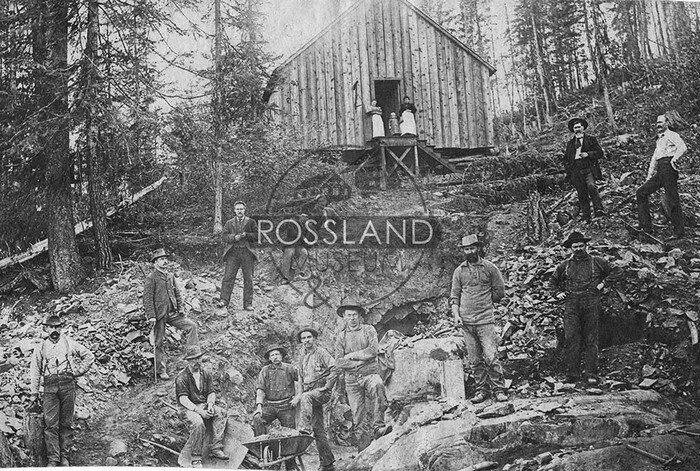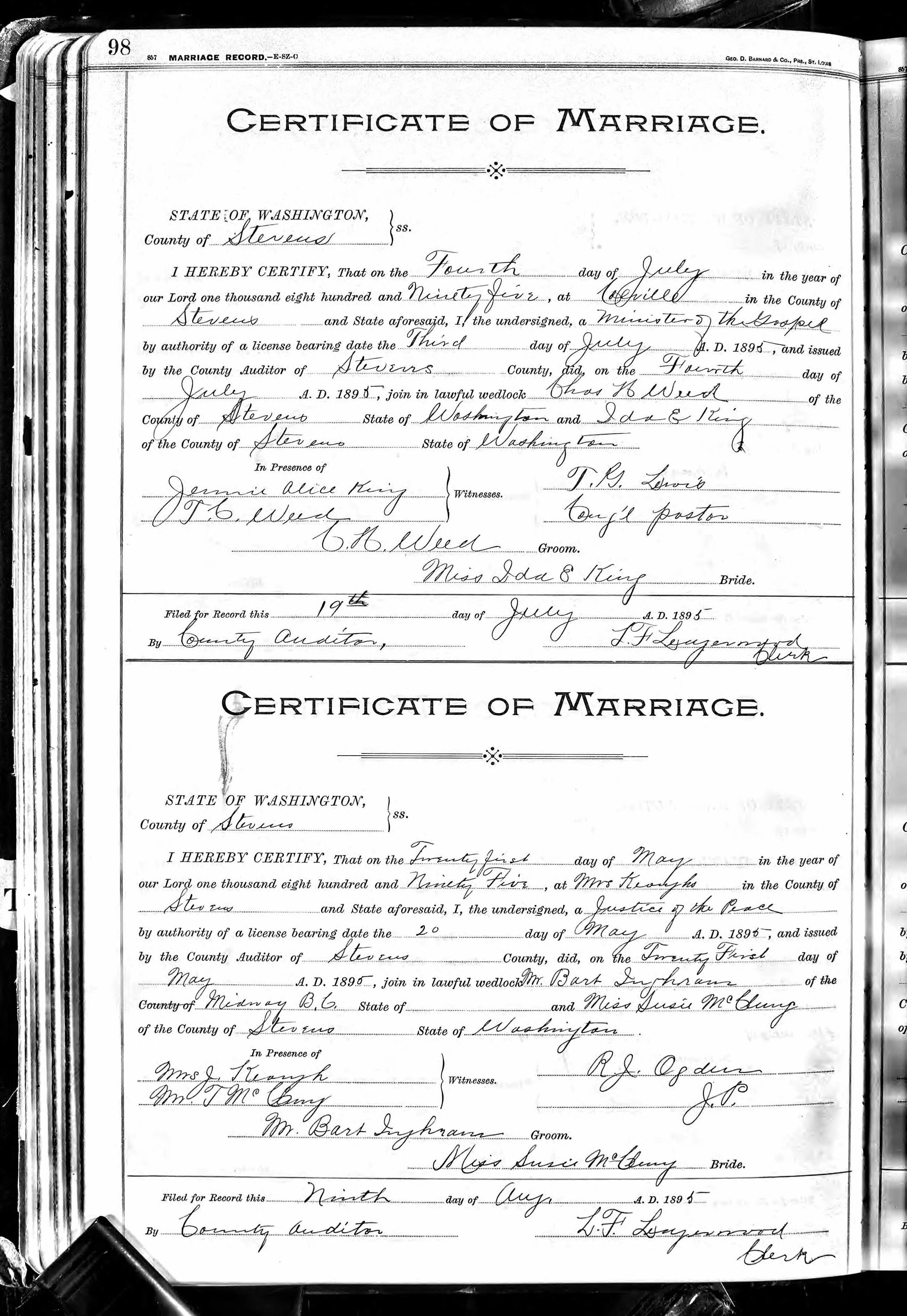"The Girl" - A Memoir by Susie McClung Inghram (1936)
In 1964, the Rossland Museum received a copy of Susie McClung Inghram’s memoirs published in 1936. Susie wrote her memoirs over the course of her time in British Columbia (Rossland, Midway) and northern Washington state (Spokane) from 1893-1897. The Girl, as Susie calls herself throughout the booklet, vividly describes the realities of life in boomtown Rossland from her perspective as a rare female in that setting.
Throughout October, we’ve been digging into topics related to women’s history for Women’s History Month, and we are thrilled to share some highlights from Susie’s memoirs!
Moving out west is synonymous with adventure, the unknown, and the wild. Nowadays, we have photographs, websites and social media to inspire us to make these dramatic moves to places unknown. During the early days of the Red Mountain (Rossland) gold rush, word of mouth, mining advertisements, and letters home convinced fortune-seekers to converge on the shoulder of Red Mountain and build a muddy mining camp. The promise of gold brought hoards of miners, single men mostly, but also some brave souls willing to cook, clean, and administer medicine and spirituality.
One such brave soul was a young miss Susie McClung who arrived in Trail Creek Landing (now Trail) on October 3rd, 1893 to the welcome sight of a hotel run by Frank Hanna and Eugene Sayre Topping. Her ultimate intention was to become a cook at the Le Roi mine camp where her father was. It would seem, though, that these plans were not pre-arranged as once she arrived at the camp after a bumpy and arduous journey, her father greeted her with: “What in the world are you doing here, child?” With few other women in town, Susie soon went to work cooking and cleaning for the men at camp. She noted that shortly after her arrival, “a miner was injured so badly that he died on the way out.” It was a rough and dangerous business.
Photo 2366.0120 - Columbia Avenue looking west from Queens Street intersection, circa 1896.
As winter approached, the cook tent was replaced with a log house with a dining room and shelves for supplies. The new building also included a kitchen and bedroom for the Girl. Susie wrote that once the bunk houses were complete, the “miners began coming in by every boat.” This was at the time that the War Eagle Mine was run by Joe Morris, one of the original locators of the claims on Red Mountain, and one of the first non-indigenous settlers in what would become Rossland.
Susie was kept hard at work, but wrote that her only pleasures were “...gliding on the skis Joe Machelle gave her, a romp in the snow with her collie dog, and her cat, which Frank Hannah Jr. had sent up by the freight team.” The cat was partially domesticated (apparently mixed with a lynx!) and became her best friend and protector during her stay in Rossland. Miners in the camp were strictly directed not to go to the cookhouse after 8pm (a rumour was spread that the Girl was a dead shot with her gun!). She recalls going down in the mine shaft with just a candlestick, travelling in a barrel used to hoist the ore. While down there, she saw men driving the steel drills by hand and crawling around to reach the gold-rich ore.
The Girl was familiar with nursing and she records many instances where she came to the aid of miners here and in the surrounding areas. First aid work was done crudely with burlap sacks for bandages and onion fry poultices. Later, while living in Midway, Susie became the assistant to a young doctor who gave her the first task to “coax this little two-year-old up to you, then hold her while I open an abcess on her shoulder.” She became all too familiar with typhoid, pneumonia, and attacks such as appendicitis.
After some time in the Red Mountain mining camp, Susie began to travel to Spokane, Northport, and Midway, taking jobs where they became available, following the development of the region. She mentions a harrowing tale of waiting for a stagecoach to arrive (with no regular hours) before finally hitching a ride with a delivery of apples and pears going to Midway. The Bennetts, a family of four, welcomed her on their journey. They had two freight teams going across the Columbia River and up a rough road to the Kettle Valley. They arrived at a hill so steep that the freight teams couldn’t make it up so Susie waited with the Bennetts’ two small children while the freight teams carried what they could up the mountain. Mr. and Mrs. Bennett also went up the mountain but were met with a horrible thunderstorm. The Girl was tasked with holding the reins of the horses left behind, and she and the children wailed through the storm, trying to ignore the yapping of a nearby coyote pack. Everyone was distressed. Susie wrote that, “By the time Mrs. Bennett got back with the other team, she too was crying, afraid that trees had fallen on them.” To think of the common fears mothers would have endured in those days!
Susie was a resourceful gal, and wrote about her savvy Christmas preparations in Midway: while having no candy, she made her own taffy pull with one large bag of sugar. This would be shared with the entire community, as was common practice at the time. Decorations were made from cardboard and moss, the pink paper from canned milk tins, and sprinkled with paste and rice. The citizens of Midway celebrated Christmas that year (1894) with Santa Claus and a dance - although a violin and guitar were the only accompaniment!
In the wake of the flood of miners moving from bonanza to bonanza there sprung up the creature comforts of a more settled population. Rugged mining camps grew into towns with businesses and banks, clubs and carnivals, teas and tennis matches. Susie’s next trip in 1895 to Spokane was one of luxury and great comfort. She married Bart Inghram and settled in Portland, Oregon. Her memoirs were published in 1936, and the Rossland Museum received a copy in 1964.
This small booklet, covering a mere 3-4 years of Mrs. Inghram’s early life is a glimpse into the past, exposing the hardships endured in the British Columbian wilderness. Susie painted a picture of tough times, unexpected turns, and the need for adaptability in the unsettled west. It also shows that writing down your memories and experiences could one day become an extremely valuable archival document.
Bart & Susie’s Marriage Certificate, courtesy of the Oregon Historical Society.
We have since learned that Susie’s real name was Frances Susan McClung and was born June 16, 1873, in Colville, Kansas. Her mother was born in Ontario, Canada, and her father was born in Tennessee. When she married Bart(on) Jackson Inghram, she was 21 years old and working as a dressmaker and living in Stevens County, Washington, where they were married on May 21, 1895. Bart , listed as "Bert" on the marriage certificate, was 25 years old, and was a livery man from Midway, B.C. Bart was born June 17, 1870, in Saunders, Nebraska.
It appears that the happy couple went to live in Midway B.C., as the 1911 Census of Canada tells us that all three of their children were born in Rock Creek, B.C. Their first child was Irma Ruth, born March 7, 1896. Their second was Sherlock William, born July 3, 1899. Their third was Ivy Jane, born July 25, 1907. The 1911 Census shows them living in Kootenay, B.C., with Bart working as a farmer. Sherlock died on November 16, 1921, in Trail, B.C. He was working as a lumberjack there from 1917-1921.
““It was many years before the Girl saw Rossland again. In the summer of 1920, she went from Nelson to Rossland by train with a friend who had pioneered in Rossland (…). How strange to go in comfort and be driven over the half deserted city. Later, on the Smelter flat in Trail, the Girl looked on the grave of Frank Hannah, who had given her the kitten. He did of typhoid fever in 1895, and she had not seen him after leaving the camp. Not many years afterward, the Girl’s only and dearly loved son was laid to rest in a plot nearby. Thus the sons of pioneer mothers were brought close in death, even though they had never met in life.””
Susie passed away on March 2, 1949, in Vancouver, B.C., from bronchopneumonia. She left her two daughters and two grandsons.
Thank you to the Oregon Historical Society for their assistance in furthering our research.
Did you know that the Rossland Museum has an ongoing community oral history project? The Rossland Memories project collects and records the stories of Rossland, as told by Rosslanders to share with future generations. Do you want to be part of this project or do you know someone who should be included? Give us a call at 250-362-7722 or email us at archives@rosslandmuseum.ca.




